
Like street-side Parisian cafes, the Starbucks pictured above at Shibuya Crossing in Tokyo, with its long counter and individual stools, is designed for people watching (courtesy of Yoshikazu Takada)
Apart from obvious differences in the size and layout of individual shops, all Starbucks are basically the same. On the surface this appears to be the case in China and Japan as well: the signature coffee-toned decor, the blond-wood furniture, the usual line of mugs, thermoses and other souvenirs, though Japanese Starbucks offers a wider array of coffee-making devices. Some shops come with national or ethnic flavors. The Beijing Starbucks that opened across from People’s University in 1998 (one of the earliest Starbucks in China) featured Ming Dynasty-style hardwood furniture, until the busy branch was shuttered without explanation ten years later, as often happens in the here-today-gone-tomorrow world of Chinese businesses. Local architects are designing some stunning new Starbucks in both China and Japan. These differences are mostly top-down, dictated from the corporate leadership.
All Starbucks baristas are trained of course in the same professional routines. They are cut from the same cookie-cutter mold and delightfully anger-proof against the most obnoxious customers (of which the US probably exhibits the largest share). Like American baristas, Chinese baristas are polite in a down-to-earth way; one is hardly aware of being in a different country. As they are required to speak some English, they are typically college-educated, unlike the usual young migrants from the countryside employed in the service industry. Still, the Starbucks worker I had a fling with back in 2004 told me they only paid her eight Yuan per hour ($1 at the then exchange rate), before she got fired for accidentally damaging the espresso machine. They are paid more now, though only proportionately so. (How do you come on to an attractive Chinese barista? She sashayed right up to my table and brushed her hip against me. I got lucky; it hasn’t happened again.)
Japanese politeness is a whole different matter. It’s also top-down but from the corporation known as Japanese Culture. It overrides and exceeds any generic training Starbucks employees get. If one hasn’t encountered it before, it is bewildering. I once lived in Japan, but I had forgotten these niceties on my first trip back there in two decades. While the incessant smiling at customers can seem plastic, they do it with such heart-felt sincerity that you might mistakenly fancy the girl serving you is taking a personal interest in you. Every salesperson in all stores in Japan does this.
Then there is the money tray, which you place your money on so that the amount you hand over remains in full view during the transaction and is never in doubt. First, the cashier returns any change in bills, punctiliously counting them out. Then she drops her hands to her sides as if finished and I start walking away. She calls me back in alarm—she hasn’t returned my coins yet. Her body language merely signaled a pause, to spotlight what was about to happen next, the returning of the rest of my change, to underscore that even the smallest change is sacred to the customer. Now that I am back in place, she counts out my coins with a smile before thanking me in the most oft-uttered phrase in the Japanese language: “Arigatou gozaimashita!” (it would be repeated upon leaving the shop). In a few minutes my order is ready, a coffee and a hot sandwich. As with the money, she proudly makes a point of identifying each of the items on the serving tray, as if they were her own personal creations.
The same routine occurred in an elegant teahouse in Nara, where I had ordered a bowl of matcha and a ginger cake. The boss, an attractive woman of about 40, pronounced the names of the tea and cake with an emphatic smile upon serving them to me. Most memorable was her enunciation of “jinjah keiki” for my cake. She wasn’t attempting to say it in English; she didn’t know any English. She was only pronouncing the words in the standard Japanese transliteration of foreign words known as katakana. While the extra syllable in “keiki” is Japanese, “jinjah” comes off as a convincing British rendition of ginger. But it was the way she did it, slinking right up on the tatami mat on her knees and pointing to the cake while declaiming its name trippingly off the tongue as if she were an actress, or as if reciting a poem she had written for me because she was in love: “JINJAH keiki” (in Japan, incidentally, it’s not out of place for a small establishment owner to personally serve you; the same is almost unheard of in China).
It was the way she did it, slinking right up on the tatami mat on her knees and pointing to the cake while declaiming its name trippingly off the tongue as if she were an actress.
If you want to see this attention to customer service on display at its most extravagant, visit any department store in the Ginza, or the Isetan department store in Shinjuku for instance, where the occasional elevator girls are still to be found, a dying breed, now regarded as perfectly redundant. Immaculate in their makeup and hat and white gloves, they appear to open and close the elevator door with a magic swipe of the hand while declaiming a set speech in lilting tones on the offerings of each floor. But what hasn’t changed is the army of saleswomen at the ready for you while discreetly appearing to be occupied with other business.
Here let me mention women’s ankles. On that first day back in Japan, rushing around Tokyo on the JR and subway lines, I was struck by something out of place: so many women on the train platforms and in the cars standing not straight on two feet but obliquely, gracefully, leaning on one leg while hitching up the other leg on their toes as if to show off their ankles. Coupled with the latest fashion of black nylons and shiny black high heels (dresses and skirts being common in Japan even in wintertime), the forest of black ankles was dazzling. But the askew female stance has a functional purpose as well. Japanese women are never standing still but always in motion, or about to burst into motion, like sprinters poised at the starting line.
So if the Isetan saleswomen are already gliding toward you when you enter, it’s because they are never at a standstill in the first place. The asymmetrical female stance is always falling into action, leaning and swooping for a quick approach, and then never coming to a complete halt but only contracting before rebounding, like a perpetual dance or ballet, all done with style and aplomb. How they acquire this remains an enigma to me, even as they themselves would never be able to explain it. And if you want to see what happens when you come up to one unawares from behind, she’ll jump to attention with a snappy “Hai!” (“Yes!”), sounding suspiciously like “Heil Hitler!”
The culture of the Far East is widely known for placing form over content, display over substance. In China this really is the case, to the extent that the Chinese often seem to embrace form for its own sake and evince an outright contempt for content. Japan is all about form and content in equal measure. They’re both important. It’s not just the coffee “experience.” The Japanese take their coffee very seriously. You pay for it all right—$4.40 for a tall (i.e. regular) brewed cup at Japanese Starbucks, compared to $2.40 for the same in China and $1.50 in the US: three times the American price. Independent coffeehouses in Japan charge $5–$10 per cup. You are never disappointed with Japanese coffee; the prices don’t allow you to be.
You are never disappointed with Japanese coffee, even as the price doesn’t allow you to be.
Yet the extent to which they genuinely care about coffee-making was demonstrated at a coffee shop in an underground shopping concourse at Tokyo station while I was waiting for a train. Here they used the traditional “siphon” (like the old vacuum coffeemakers popular in the US up through the 1940s) for hand-made cups of coffee, still in use in most independent Japan coffee venues. An upper glass chamber filled with ground coffee fits over a lower one filled with water. As the water heats up, expanding air pressure forces it into the upper chamber, before it falls back down as coffee when the heat is removed. I used a siphon for my two years in Japan and many years thereafter, for the unique salty-buttery notes it lends to the coffee.
Here the woman was employing a rather different method with the siphon maker. She had spooned more coffee into the upper chamber than should have been used for a single cup and I feared it would turn out muddy and unpalatable. As the water bubbled up, she added yet more water from the kettle. Now with twice as much water in the upper chamber as the lower chamber had capacity for, the surplus coffee would have no space to filter back down. But when the lower chamber filled up, she removed the upper chamber and set it in the draining tray, letting the rest of the coffee dribble down the sink. Was she really allowing all that coffee to go to waste? Then it clicked. Of course, the larger volume of coffee you make in one batch (whatever the coffee maker), the better it tastes. This shop had decided to privilege quality over expense, throwing out half the coffee they made in order to push the intensity of flavor up a notch—and keep their customers loyal. Had they been doing this all along and I was only noticing it for the first time?
From my first days in Japan I had been struck by their remarkable appreciation for coffee. My initial sojourn was in the Wakayama countryside. In this rural enclave there was an array of elegant little coffeehouses to choose from, and the local coffee and liquor shop even roasted their own beans. That was a quarter century ago. Today the variety of establishments anywhere in Japan is ever more extravagant. They prize all coffee-making methods. I discovered the cold-brewed “Dutch” coffeemaker in Japan, a contraption with glass spirals looking like a chemistry apparatus and producing a brew of honey-like smoothness. In terms of time-honored devotion to the art, the Japanese may be the most sophisticated coffee consumers in the world. Where does Starbucks fit in? As a nice down-market option available for American-style coffee, priced competitively with other popular chains but below the innumerable hand-crafted coffee shops.
This coffee shop had decided to privilege quality over expense, throwing out half the coffee they made in order to push the intensity of flavor up a notch, on the bet they’d win a loyal following.
The art of coffee extends to interior design. A coffeehouse may have different functions and clientele, with seating arranged accordingly. Japanese Starbucks has all the variants and more. While the usual small round tables predominate, most Starbucks everywhere have at least one living room-style hearth with fake fireplace, a cozy couch and matching upholstered chairs. Many shops also have a long sturdy workstation table with multiple power outlets for plugging in laptops. Some also feature a European-style espresso bar, a counter for quaffing a quick coffee on the way to work or back home; the bar may face the street through a window for Parisian-style people watching.
And then for something only seen in Japanese Starbucks: a salaryman station (as I call it), which is a row of isolated chairs each with a small low table for single-person use. Serving as a more private, contemplative space than a counter with stools, it was exclusively businessmen occupying these spots, or slots. This emphasis in both European espresso bars and Japanese Starbucks on coffee consumption by individuals underscores the importance of coffee, the intimate need for coffee, the orgasmic coffee encounter, as opposed to mere vulgar caffeine addiction. (I have nothing against caffeine but refer to a certain breed of Americans, only a step above the Coke-for-breakfast crowd, for whom flavor distracts from raw caffeine consumption and the worse the coffee, the more relief they derive from it.) In the Japanese case, this is sometimes taken to the extreme, with the hushed atmosphere of so many customers lost in their little bubble while they bliss out with their hot dose, like addicts in an opium den. Japanese Starbucks is not only the most expensive in the world, it is also the loneliest.
Now let’s have a look at Chinese Starbucks. Again, on the surface, the same; on closer inspection, not. The Chinese can be indifferent to detail, and we start with basic quality issues. The daily brew is often “off,” sometimes too weak and brackish, when they carelessly fail to pour all of it out of the bag when making it, sometimes too strong, when the latest brewed batch starts to evaporate after sitting too long.
One should reliably receive an excellent cup every time, as one does in Japan, where this is ingrained and the aesthetic is to do it right or not at all. A Japanese ex-girlfriend made better coffee than me, and I thought I made decent coffee. At the same time, I am sympathetic to the situation of Chinese baristas. The problem with quality control here is that most of them don’t drink coffee, so how could they ever get it right? Through the meticulousness of the training, of course. But people are not machines. Some have the knack and some don’t; those who don’t drift from the standard and need retraining by annoying customers like me.
Other factors militate against well-made coffee at Chinese Starbucks. One is the sad truth that the chain is no longer in the coffee but the confectioner’s business. It dispenses desserts—assorted Frappuccinos and whipped-cream candied lattes—to profit off people’s sugar addiction in our diabetic age. If the menu at US Starbucks is dominated by candy, that’s because it’s cheap. In Japanese Starbucks, the sugary concoctions are more expensive and considered somewhat wasteful. The Japanese are Europeans when it comes to coffee anyway, purists.
In China, hot candied beverages are affordable enough for the average customer, but the main reason they’re so popular has to do with the Chinese dietary constitution, so different from the Western. Americans are fond of extreme contrasts of temperature. The Chinese don’t like their hot drinks as hot as we do or their cold drinks as cold. They prefer to let their coffee or tea sit until lukewarm before drinking it. Even soups are often served warm rather than hot. They claim moderate temperatures are best for the stomach. Whipped-cream beverages muffle heat and cushion cold, so they like them. Naturally, baristas here are inclined to serve coffee less than piping hot, if they can help it.
“Coffee? What’s that?” a Chinese might remark. “Who cares how it’s made? Your Western coffee cannot even begin to compare with the varieties and vintages of Chinese tea!”
Considering the world’s most expensive tea is found in China and is valued at $36,000/lb., compared with $500–$600/lb. for the most expensive coffee (that from beans digested through the dung of civet cats or elephants), he might have a point. Not to mention that Westerners’ knowledge of tea tends to be quite primitive, limited to such coarse black teas as Twinings or Lipton and sour herbal teas. Green teas, by the way, are enjoyed at a lower temperature than coffee, in Japan as well, particularly Gyokuro tea, designed to be brewed with water heated to only 50–60 C (120–140 F).
The big irony is that most Chinese don’t much like tea either. They prefer hot water as their comfort drink (and gruel for breakfast). “Tea” is one among a number of tropes and clichés, like “Confucius,” whose overwhelming importance to their culture the Chinese are quick to remind you of, while hardly figuring in their actual life. Connoisseurship of tea is highly developed in Taiwan (as is coffee), to be sure, but far less so on the Mainland. Moreover, the Mainland’s teas, tragically, have been compromised by heavy metal pollution, and not approved for import in many countries for that reason.
China is primarily a food, not a beverage culture. This does not mean beverages are not appreciated; beer and spirits are regularly consumed with food. The quality of beverages, however, is never quite up to that of the cuisine. Appreciation of Western wine is growing among a small sector of the population that can afford it, but this will be years in the making. Appreciation of fine coffee is beginning to take off as well, but for now largely confined to Beijing and Shanghai, but notably not China’s third major city, Guangzhou (Canton).
The reasons for this are revealing and help explain the challenge of coffee culture in China generally. Guangzhou has almost everything, not to mention a long history of contact with the West and a memory of this in its genes. There’s an extra layer of urbanity to this city that makes it more than the sum of its parts. Paradoxically, it is also the most insular of China’s first-tier cities. Why open yourself to the outside when you’re self-sufficient? That food culture is more developed in Guangzhou than anywhere else in China accounts for a corresponding lack of interest in beverage culture.
On my first trip to Guangzhou in 1990, poverty predominated, as it did everywhere in the country. There were few high-rises in old Guangzhou, just rickety ancient structures with crumbling facades and people’s underwear hanging out the windows to dry. It seemed all it would take is a minor earthquake to reduce the city to rubble. There must have been great restaurants hidden away in pockets and corners, but I wasn’t able to find any. The nicest-looking restaurant I did find gave me a terrible case of food poisoning.
Today, the city has the most complex cuisine in China. It’s certainly more exciting than Hong Kong and that city’s overrated and overpriced establishments. Admittedly, the only upscale fare I sampled was at the Yung Kee Restaurant in Central, which specialized in dishes made with cognac—“XO” stir-fried eggs—served by fusty elderly waiters. The smell and taste of the food conjured up Chinese American restaurants to me; they originally derive from Hong Kong and rely on the same tired old formulas. One senses that Cantonese restaurants in Hong Kong and Chinatowns the world over rarely if ever change their menus, fearing (perhaps rightly) they would go out of business if they attempted to upgrade their dishes without knowing how. The food business on the Mainland, by contrast, is intensely competitive; it survives and thrives by continually transforming itself, and the inventiveness of the cuisine is astonishing.
We see the same urban creativity applied to other industries, the freewheeling sex business for instance. Guangzhou could be considered one big red-light district (though the satellite city of Dongguan is the real trailblazer). A massage aficionado, I noticed a hotel spa in the same building as a McDonald’s not far from my hotel. Normally, the bath and changing room in saunas and bathhouses are sex-segregated; you’ll encounter female staff soon enough anyway in your massage chamber. In this place, the masseuses freely ambled about the men’s shower. It was also one of the rare parlors to offer a “prostate maintenance” treatment, as my masseuse called it in all seriousness, before she performed not a hand-job but acupressure on my perineum and erect penis. As it served a therapeutic purpose, no hand-job followed.
Or how does one explain Guangzhou’s mindboggling audio market, the largest in the world, with vast malls devoted to both homegrown DIY audio systems and luxury high-end equipment from around the world?
One is tempted to see a connection between the city’s cultural sophistication and the region’s complex linguistic situation. Guangdong Province has a long history of ethnolinguistic mixing. Most of its population is trilingual to some degree: native in a local and/or regional dialect (e.g. Hakka) and fluent in both the regional (Cantonese) and national dialect (Mandarin). Whereas Cantonese is Greek to Mandarin speakers from the north, native Cantonese are at ease in Mandarin, which as the country’s official language is taught in schools and employed in the media. I was able to witness a virtuosic quadrilingualism over dinner with a former grad student when I last visited Guangzhou. She spoke English with me, Mandarin with my girlfriend from Beijing, Cantonese with the waitress, and Hakka with her parents on her cellphone. She said she had no conscious awareness of switching between these languages and did it on a daily basis.
Guangdongers look down on monolingual north China and its simple rustic food, but this pride conspires to maintain a closed culture. This is the Guangzhou paradox, how this most cosmopolitan of Chinese cities is immune to outside influences. Fascinating as the place is on its own terms, it doesn’t allow in much that is new. I had assumed that nowadays the city would be at the forefront of the Chinese café revolution. But in this center of the largest urban formation in the world, the Pearl River Delta megalopolis, coffeehouses were few and far between. After hours of traversing the city center on foot I eventually located a crowded and noisy Starbucks.
Shenzhen, the urban behemoth lying between Guangzhou and Hong Kong, increasingly vies with the two cities in economic importance. A new city thrown up virtually from scratch in the 1970s and populated with people mostly from outside the province, Mandarin rather than Cantonese-speaking, it could be a city anywhere in China. It is also free of many of Guangzhou’s arcane prejudices and traditions. Within a few minutes walking distance in any direction are coffeehouses in abundance. As Shenzhen coffee culture grows ever more creative (check out the cafés in the Shekou area next time you’re there), Guangzhou is stuck in a time warp and reflects the coffee situation in the rest of the country—the countless second and third-tier cities of the hinterland (note that I am happy to be refuted by any future developments).
Before Starbucks began educating the population on the difference between brewed and instant, all coffee was equated with Nescafé, sold in fancy boxed sets with powdered creamer and gold-rimmed cups and tiny golden spoons, and passed around unopened as generic gifts. That this harsh black substance, so reminiscent of traditional Chinese medicinal potions, could exist in gradations and complexity of flavor was a challenging concept. If some have grown to like coffee it is only in the way that they’ve grown to like Coca-Cola, as a satisfying but simple drink. Curiously similar to coffee in color and hard patina, Coke has the advantage of having had a big head start here in the 1980s and is thus widely imbibed. All these Western concoctions, from the Chinese standpoint, are likable enough once one adapts to their bitterness. But the idea of seeking out a coffeehouse for the quality of its coffee makes about as much sense to them as trying out a restaurant to sample its Coke.

Jianwai Soho Starbucks, Beijing. The emphasis in Chinese Starbucks shops is on group socializing rather than individual consumption
Still, the Chinese do increasingly enjoy the atmosphere of cafés and they are indeed often crowded. The interior design of Chinese Starbucks, in contrast to the Japanese counterpart, accordingly prioritizes group over individual seating (some solitary customers casually grab large tables for themselves or sit for hours without buying a drink). Starbucks can expect to see brisk business in China as more and more shops are opened in smaller cities. But as long as the café milieu is valued over coffee itself, quality venues will struggle alongside bastardized ones, like the impostor Starbucks I once chanced upon in the city of Dalian. No effort was made to make the interior resemble the real thing; it was vintage Chinese-style café, replete with booze and a bar.
In China, coffee is an agent of change. Starbucks transformed coffee culture in Beijing and Shanghai in the first decade of the 21st century, which could be called the Starbucks era. Meanwhile in the big cities, everything moves so quickly it’s impossible to predict what the coffee culture will look like just a few years hence. The chain’s influence is dwindling in Beijing and Shanghai in fact, even as it and its competitors Costa Coffee and Pacific Coffee expand into second and third-tier cities.
Now, in the middle of the century’s second decade, two trends are effecting further change: a growing expat population informed with coffee knowledge, and the explosion of artisanal coffeehouses and roasters in Taiwan and South Korea. The chains may still do brisk business but they are already passé and tacky, as the hip crowd gravitates to establishments that care about coffee quality. The emphasis on luxurious ambience remains, and with a vengeance, as we see in Beijing with the current invasion of massive, chandelier-themed “café palaces,” led by Korean Maan Coffee and Caffe Bene chains.
* * *
Like this post? Buy the book (see contents):
At the Teahouse Café – Essays from the Middle Kingdom
Related posts:
The classic coffeehouse: Ten essentials
Black forest cake blues: The customer service problem
From struggle sessions to public dressing-downs: China’s continuity of psychological control
Theatrics of Japanese Noh, Kabuki, and the mixed-bathing Onsen
Categories: China

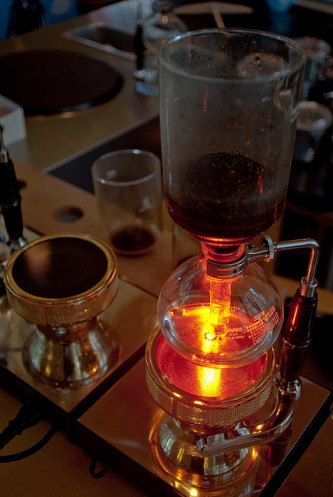
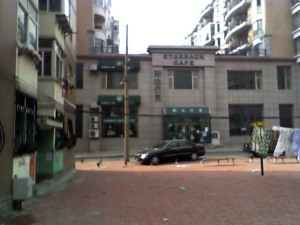


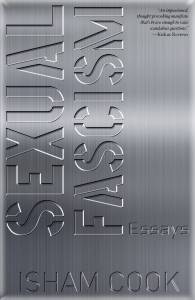
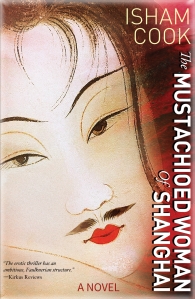








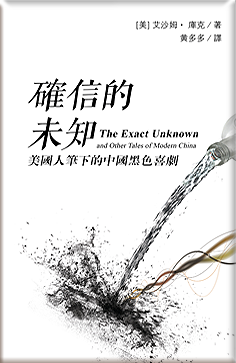
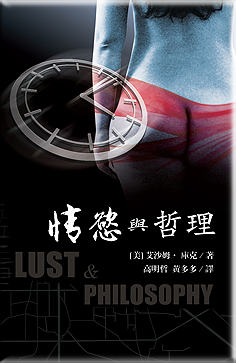

Lacking in knowledge of coffee, I’m not sure whether the Starbucks difference is a good illustration of the “Chinese-Japanese cultural chasm”. For me, the real problem with Chinese lies not so much in bad taste of the coffee culture, as long as one is not evaluating a culture solely in terms of how well it absorbs from other cultures, but on the one hand indifference of their own culture and on the other, crude or awkward adaptation to the exotic.
Good point. I would argue that the more a culture learns to appreciate what other cultures have to offer, the more insight it gains into its own cultural (the same applies to individuals). Japan is both very good at absorbing ideas from other cultures and at the same time very attuned to their own culture. The Chinese boast a lot about their own culture yet aren’t really that interested in it!
Interesting article on coffee, thanks, Mike Liston
Thank you for an excellent essay of keen observations about how the two (or three) cultures shine through in Starbucks. I’m sorry to say I’ve spent time in both Chinese and Japanese Starbucks without being observant enough to notice. Since I don’t like coffee I never really paid attention to how it is made. I can’t tell bad coffee from good coffee. I drink Coke for breakfast. But I can tell the difference between China and Japan.
Thanks for reading my post, but you aren’t serious about drinking Coke for breakfast but are pulling my leg, right? I’ve heard rumors such people exist but have always considered them to be a hypothetical category. No, you can’t be serious. Wow. I’m trying to wrap my head around this. Do you, like, heat the Coke and drink it hot?
This was an interesting article. I’ve lived in both Japan and China. I’ve also lived in Vancouver which is just North of Seattle and has a very strong coffee and cafe culture, furthermore I’ve actually helped open a cafe or two…
I’m not a big coffee drinker. I’ve spent so much time in cafes using WiFi. Starbucks in China at least in 2005 were one place to find solid free wifi, with free being defined as free with purchase.
For baked goods in China, I had my go to Korean bakery in Wu Dao Kou. China is definitely a tea country, I learned the characters for Chrysanthemum as tea made from that flower is quite common and mild.
I haven’t been back to Asia in quite a few years so I’m not sure some of my favourite spots are still open. Starbucks doesn’t sell coffee, they sell a consistent experience. They like some other big consumer brands want you to get the same tasting product in every store. Japan is definitely more about unique experiences, quality, and ‘servisu’, whereas China seems to be in such a hurry to become a bigger more important country that somethings have been left behind. This is especially noticeable in Beijing and Shanghai. It is good to get away from the big cities and chain stores and try the local joints. Not likely to find many espresso machines off the beaten path in China, at least not when I was there. Whereas most small towns in Japan have a cafe.
Japan is also so much smaller and people have freedom to travel so what is popular in Tokyo, Osaka, or Nagoya can easily be brought back to more distant villages.
Things have improved considerably in the big cities, especially Beijing and Shanghai, since 2005. If you’re ever back in Beijing in the foreseeable future, check out the three cafes I mention at the end of the article.
I actually ended up living in Shanghai four for four more years. I did visit Beijing after 2012 I guess. Not sure I went to that many cafes but I did go to Starbucks on West Lake. Not sure when I left this comment or why I’m just now being notified of replies, but on my blog is a list of cafes I went to in Shanghai. Links are probably banned in comments…
http://blog.muschamp.ca/2018/08/14/coffee-in-shanghai/
The Americans I have met in my five years in China seem to see Starbucks as the ultimate being. Starbucks, the world over, sell very cheap,yet overpriced coffee and sugary snacks. Vietnamese coffee is vastly superior, cheaper, usually served better, and in better surroundings.
Americans need to stop this, ‘if they only served us correctly’ shit.
You’ll be serving China in two years. Sleep tight. 🙂
I disagree. Coffee needs to be served correctly, and that’s why the Japanese (not the Americans) serve the best coffee in the world – they do it correctly. I’ve been to Vietnam. Some coffee there is good, some not so good, because they tend to use stale beans.
With poor bean quality masked by a 50 percent mix of condensed milk. Not really coffee, more a dessert drink though I am a fan.